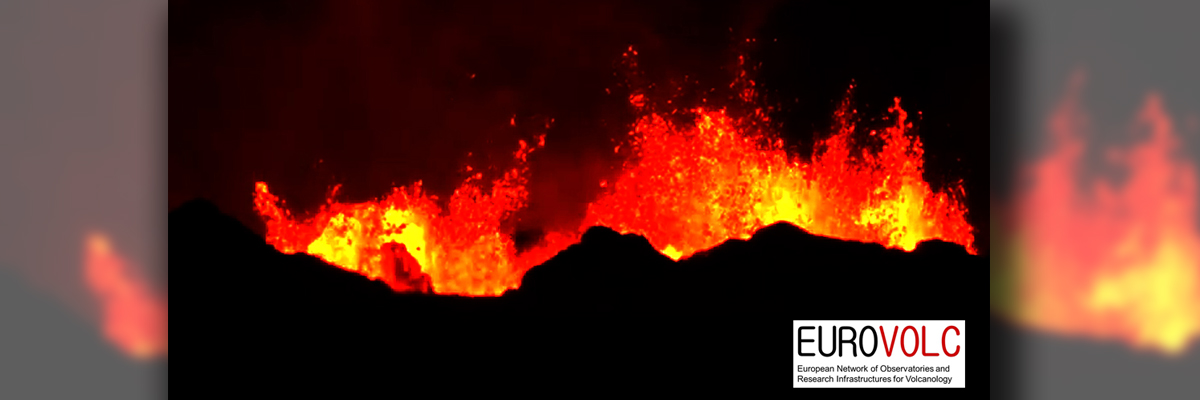9 de December de 2021
EUROVOLC project, partenered by Geosciences Barcelona (GEO3BCN-CSIC), has launched two new interactive tools about volcanoes: The European Catalogue of Volcanoes and Volcanic Areas (ECV) and the EUROVOLC tool for observations of volcanic events.
ECV is an interactive web-based tool that gives access in a formatted way to detailed information on selected key volcanoes, as well as the location of more than 100 active volcanoes, which are monitored by European countries (Iceland, France, Greece, Italy, Portugal, and Spain). For the first time, Volcano Observatories in Europe gather the dissemination information regarding volcanoes and volcanic hazards.
According to Adelina Geyer, researcher at GEO3BCN, “this new tool aims at giving information about the geological background, the eruption history, volcanic hazards and possible eruptive scenarios of the selected volcanoes and volcanic areas. The catalogue includes a section to search for a specific eruption”.
Volcano Observatories in Europe have worked together to develop the catalogue, collecting the data, material, pictures, and sources, to create an easy-to-use portal for researchers, students, and the general public. All texts are available both in English and several European languages, said Geyer.
“The Catalogue of Icelandic Volcanoes (CIV) developed by the FUTUREVOLC project was used as a base for the new European Catalogue which also gives access to the information on active Icelandic volcanoes from the CIV”, said Adelina Geyer. The rest of the selected volcanoes and volcanic areas were chosen according to the following criteria: the most active areas, the most known, the riskiest areas or to represent different kinds of volcanism.
Several volcano observatories and research institutions have been involved in the development of the ECV: Icelandic Meteorological Office (IMO) and Institute of Earth Sciences, University of Iceland (UI) from Iceland; Istituto Nazionale di Geofisica e Vulcanologia (INGV) from Italy; Centro de Informação e Vigilância Sismovulcânica dos Açores (CIVISA) from Portugal; Institut de Physique du Globe de Paris (IPGP) and Université Clermont Auvergne (UCA) from France; Hellenic Survey of Geology and Mineral Exploration (HSGME) from Greece; Agencia Estatal Consejo Superior de Investigaciones Científicas (CSIC) and IGN from Spain, and Natural Environmental Research Council (NERC) and Met Office from the UK.
The Editors of the European Catalogue of Volcanoes are Sara Barsotti (IMO), Bergrún Arna Óladóttir (UI, IMO) and Mauro A. Di Vito (INGV).
Citizen science tool for observations of volcanic events
EUROVOLC tool for observations of volcanic events is a platform for collating observations from people witnessing volcanic phenomena at European and other volcanoes. The tool allows you to contribute your own observations, as well as to access observations collected through other citizen science tools available across Europe, including myVolcano (British Geological Survey); sulphur dioxide reporting (Iceland Met Office); and Osservatorio Vesuviano web questionnaire & Tefranet (INGV-Catania).
This tool has been developed by the British Geological Survey with the collaboration of Leeds University, Istituto Nazionale di Geofisica e Vulcanologia, Dipartimento della Protezione Civile of Rome and the Icelandic Meteorological Office.
Both the catalogue and the new Eurovolc tool have been developed by The European Network of Observatories and Research Infrastructures for Volcanology (EUROVOLC), an European project funded by ‘Horizon 2020’. Eurovolc is aimed at facilitating communication and integration within the European volcanological community, bringing together the wide range of disciplines necessary for effective volcanic research.

